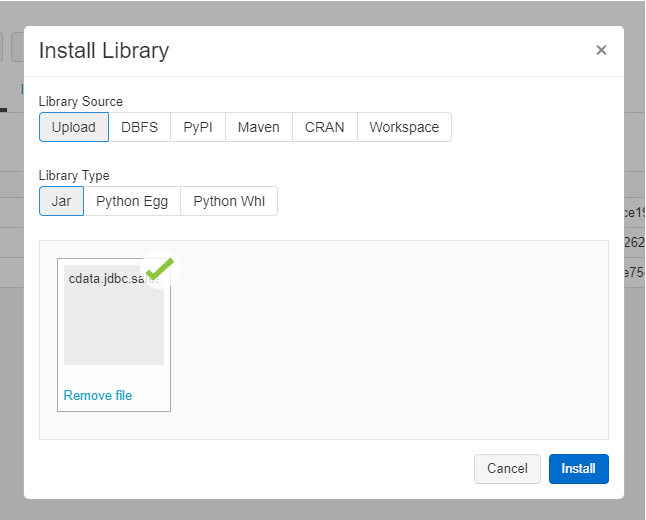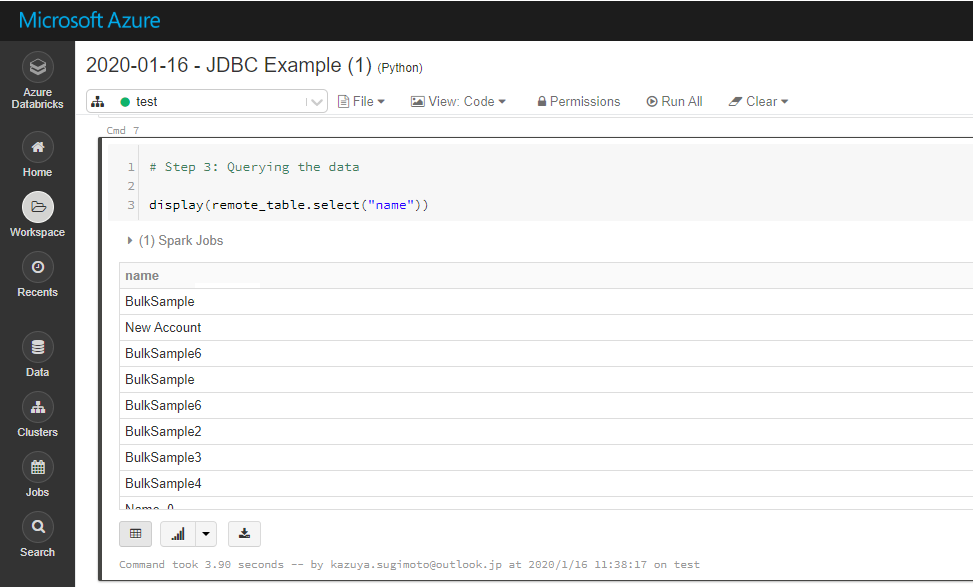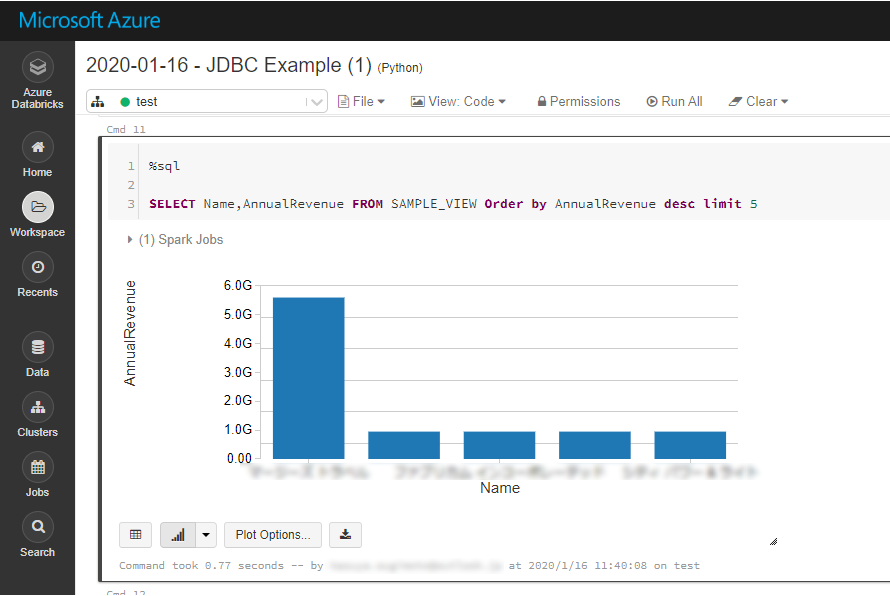Model Context Protocol (MCP) finally gives AI models a way to access the business data needed to make them really useful at work. CData MCP Servers have the depth and performance to make sure AI has access to all of the answers.
Try them now for free →How to connect and process QuickBooks Online Data from Azure Databricks
Use CData, Azure, and Databricks to perform data engineering and data science on live QuickBooks Online Data
Databricks is a cloud-based service that provides data processing capabilities through Apache Spark. When paired with the CData JDBC Driver, customers can use Databricks to perform data engineering and data science on live QuickBooks Online data. This article walks through hosting the CData JDBC Driver in Azure, as well as connecting to and processing live QuickBooks Online data in Databricks.
With built-in optimized data processing, the CData JDBC driver offers unmatched performance for interacting with live QuickBooks Online data. When you issue complex SQL queries to QuickBooks Online, the driver pushes supported SQL operations, like filters and aggregations, directly to QuickBooks Online and utilizes the embedded SQL engine to process unsupported operations client-side (often SQL functions and JOIN operations). Its built-in dynamic metadata querying allows you to work with and analyze QuickBooks Online data using native data types.
About QuickBooks Online Data Integration
CData provides the easiest way to access and integrate live data from QuickBooks Online. Customers use CData connectivity to:
- Realize high-performance data reads thanks to push-down query optimization for complex operations like filters and aggregations.
- Read, write, update, and delete QuickBooks Online data.
- Run reports, download attachments, and send or void invoices directly from code using SQL stored procedures.
- Connect securely using OAuth and modern cryptography, including TLS 1.2, SHA-256, and ECC.
Many users access live QuickBooks Online data from preferred analytics tools like Power BI and Excel, directly from databases with federated access, and use CData solutions to easily integrate QuickBooks Online data with automated workflows for business-to-business communications.
For more information on how customers are solving problems with CData's QuickBooks Online solutions, refer to our blog: https://www.cdata.com/blog/360-view-of-your-customers.
Getting Started
Install the CData JDBC Driver in Azure
To work with live QuickBooks Online data in Databricks, install the driver on your Azure cluster.
- Navigate to your Databricks administration screen and select the target cluster.
- On the Libraries tab, click "Install New."
- Select "Upload" as the Library Source and "Jar" as the Library Type.
- Upload the JDBC JAR file (cdata.jdbc.quickbooksonline.jar) from the installation location (typically C:\Program Files\CData[product_name]\lib).

Connect to QuickBooks Online from Databricks
With the JAR file installed, we are ready to work with live QuickBooks Online data in Databricks. Start by creating a new notebook in your workspace. Name the notebook, select Python as the language (though Scala is available as well), and choose the cluster where you installed the JDBC driver. When the notebook launches, we can configure the connection, query QuickBooks Online, and create a basic report.
Configure the Connection to QuickBooks Online
Connect to QuickBooks Online by referencing the class for the JDBC Driver and constructing a connection string to use in the JDBC URL. Additionally, you will need to set the RTK property in the JDBC URL (unless you are using a Beta driver). You can view the licensing file included in the installation for information on how to set this property.
driver = "cdata.jdbc.quickbooksonline.QuickBooksOnlineDriver" url = "jdbc:quickbooksonline:RTK=5246...;InitiateOAuth=GETANDREFRESH"
Built-in Connection String Designer
For assistance in constructing the JDBC URL, use the connection string designer built into the QuickBooks Online JDBC Driver. Either double-click the JAR file or execute the jar file from the command-line.
java -jar cdata.jdbc.quickbooksonline.jar
Fill in the connection properties and copy the connection string to the clipboard.
QuickBooks Online uses the OAuth authentication standard. OAuth requires the authenticating user to log in through the browser. To authenticate using OAuth, you can use the embedded OAuthClientId, OAuthClientSecret, and CallbackURL or you can obtain your own by registering an app with Intuit. Additionally, if you want to connect to sandbox data, set UseSandbox to true.
See the Getting Started chapter of the help documentation for a guide to using OAuth.

Load QuickBooks Online Data
Once the connection is configured, you can load QuickBooks Online data as a dataframe using the CData JDBC Driver and the connection information.
remote_table = spark.read.format ( "jdbc" ) \ .option ( "driver" , driver) \ .option ( "url" , url) \ .option ( "dbtable" , "Customers") \ .load ()
Display QuickBooks Online Data
Check the loaded QuickBooks Online data by calling the display function.
display (remote_table.select ("DisplayName"))

Analyze QuickBooks Online Data in Azure Databricks
If you want to process data with Databricks SparkSQL, register the loaded data as a Temp View.
remote_table.createOrReplaceTempView ( "SAMPLE_VIEW" )
The SparkSQL below retrieves the QuickBooks Online data for analysis.
% sql SELECT DisplayName, Balance FROM Customers
The data from QuickBooks Online is only available in the target notebook. If you want to use it with other users, save it as a table.
remote_table.write.format ( "parquet" ) .saveAsTable ( "SAMPLE_TABLE" )

Download a free, 30-day trial of the CData JDBC Driver for QuickBooks Online and start working with your live QuickBooks Online data in Azure Databricks. Reach out to our Support Team if you have any questions.

